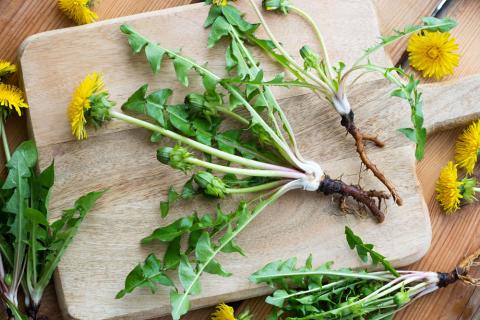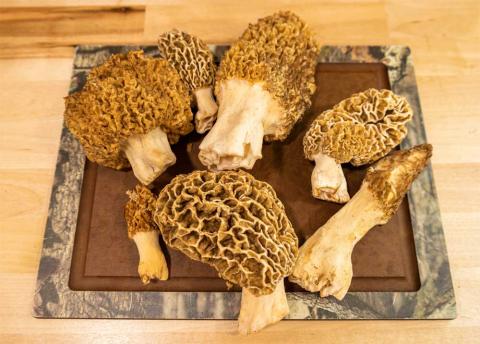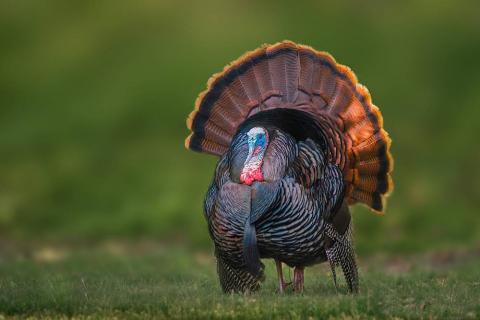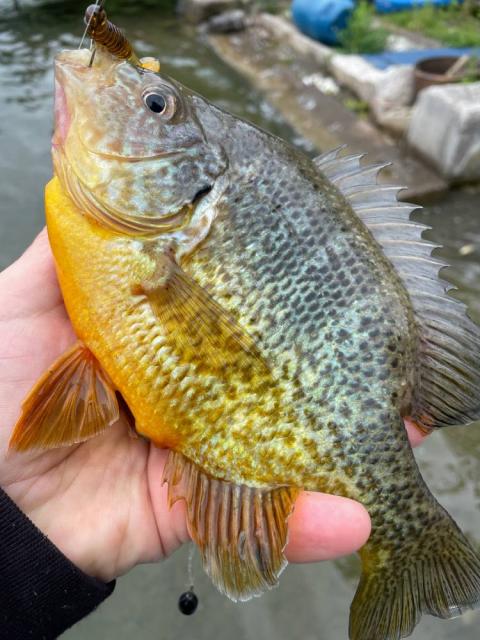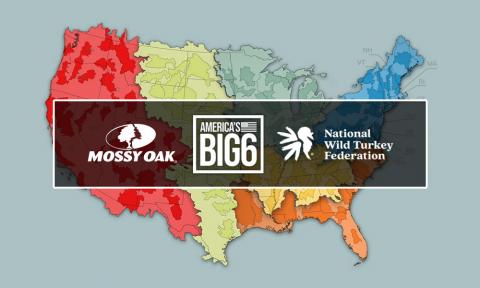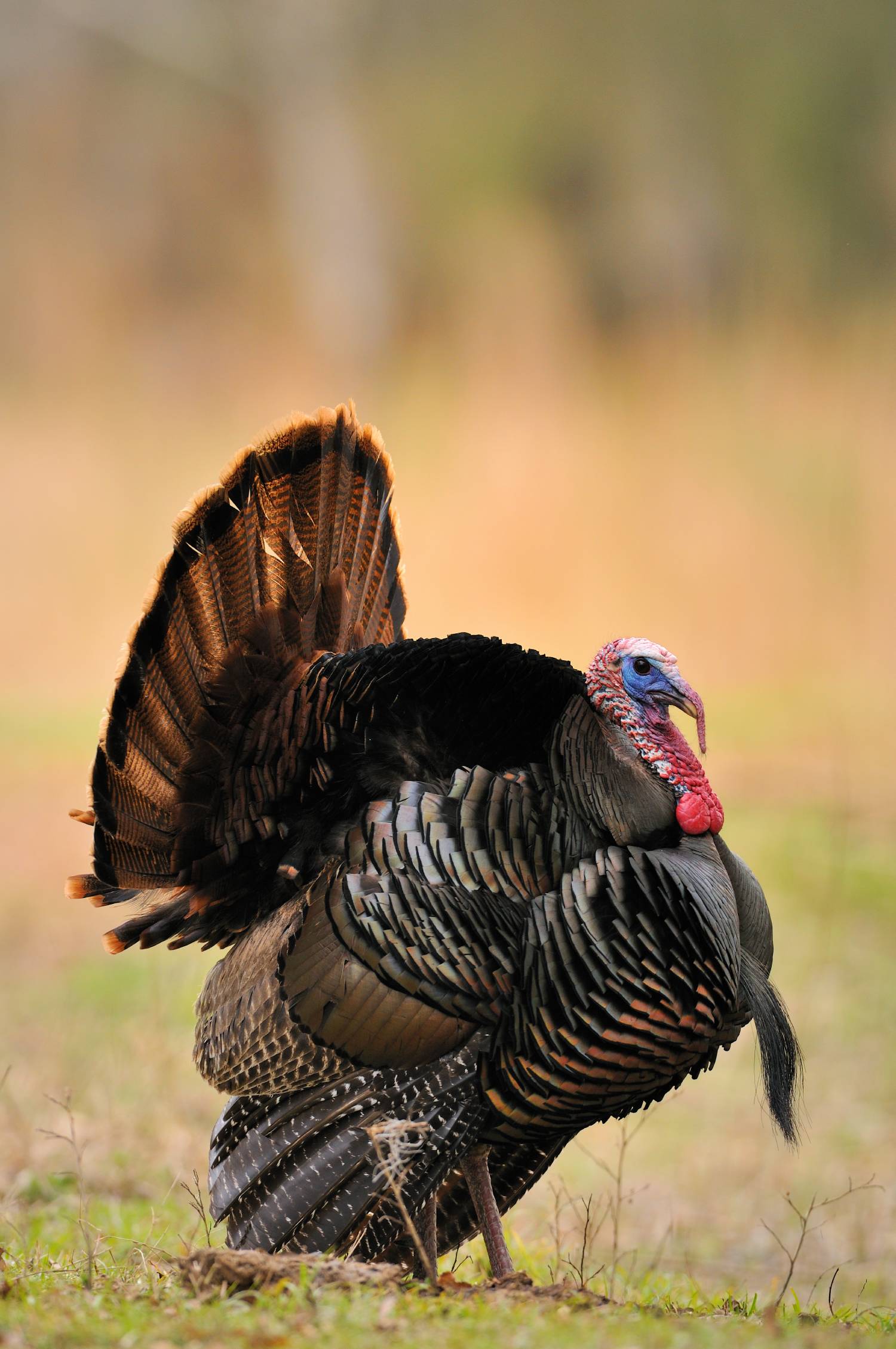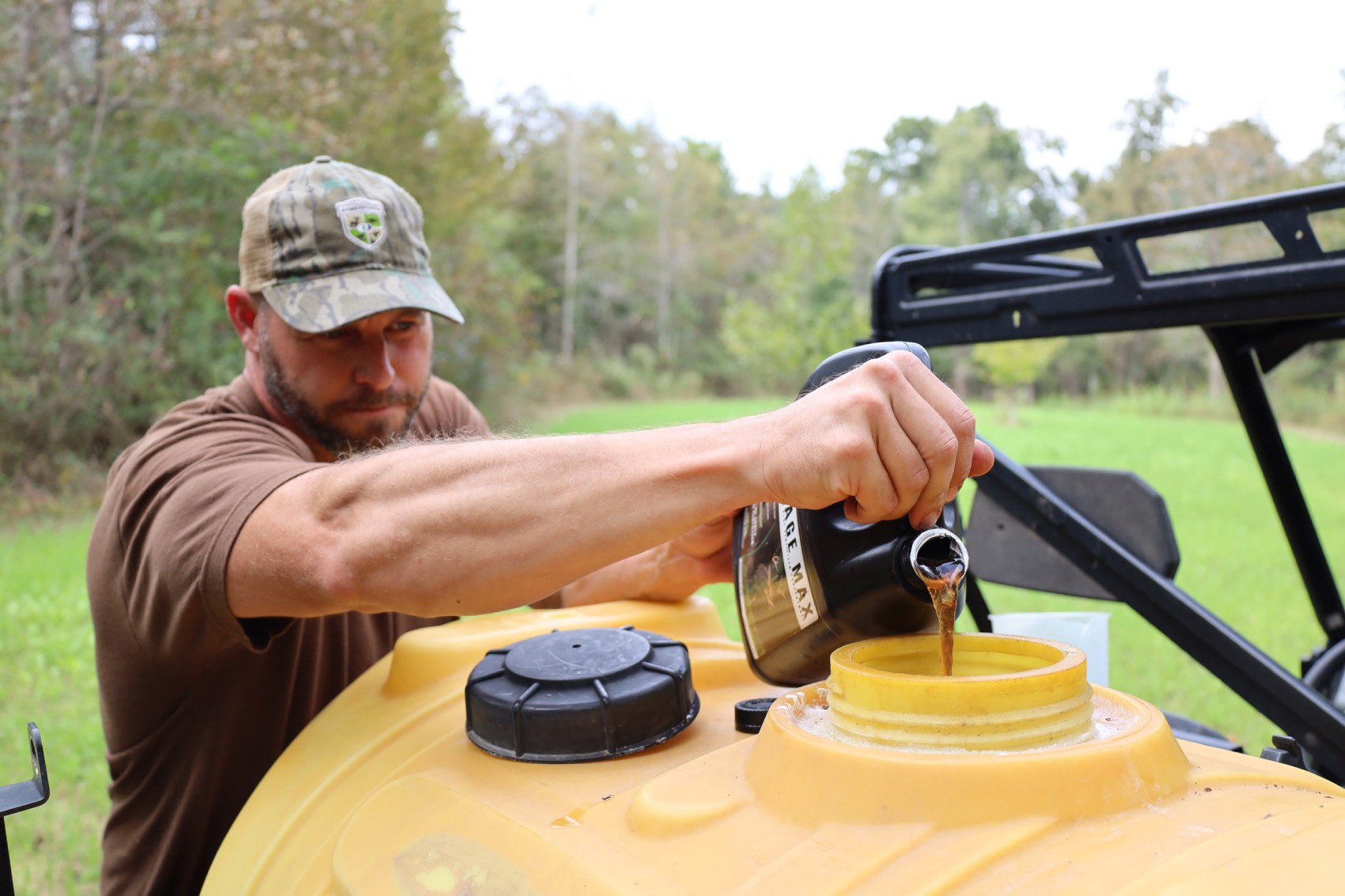
By Todd Amenrud
Many gamekeepers have questions about fertilizing their food plots. Set aside the differences between granular and liquid fertilizer, many have general questions about the nutrient loads, ratios, and various different types of fertilizers. It’s not that difficult if you understand what a plants’ needs are and how plants access and obtain the nutrients. First, we’ll try to run over some general fertilizer/nutrient basics and then look at the differences between liquid and granular options.
Fertilizer Basics
We need to understand that the fertilizer recommendation that most companies like BioLogic give you is just a suggestion for the amount of (N) nitrogen, (P) phosphorus and (K) potassium that particular blend/crop uses during a typical growing season under average conditions and a neutral pH. It is NOT necessarily the specific fertilizer you should be using. A soil test should be done to determine “your soil’s pH and current nutrient load.” These figures are used in union with what the plant’s need are to determine your exact fertilizer requirements.
There are 16 elements known to be needed for healthy plant growth. Three of these are taken care of through photosynthesis the others are absorbed through the plant’s roots, or in the case of liquid fertilizers, the nutrients are absorbed through the cells in the plant’s leaves and stems. Those remaining 13 nutrients can be divided into “macro” and “micro” nutrients. Macronutrients, or “major” nutrients, are usually lacking first in the soil because plants use them in large amounts. However, these nutrients (N, P, K, Ca, Mg and S) are easy to keep track of by performing regular soil tests, and because plants use large amounts of these you would see obvious signs of plant stress if one were lacking.
Micronutrients are also elements needed for plant growth, but in smaller amounts. These trace elements (B, Cu, Fe, Cl, Mn, Mo and Zn), since they’re only needed in small amounts it may not be obvious if they’re lacking and many standard soil tests may not check for them. Some of the micronutrients can be replenished through organic matter, so if you don’t have ample organic matter this is something you should be aware of and look for.
Once you know what’s recommended for the specific crop you’ll need to do a soil test to determine your soil’s current nutrient load and pH. Then, you will use those figures to ultimately determine what fertilizer you need. The three numbers represent the amount of (N) Nitrogen, (P) Phosphorus and (K) Potassium found in 100 pounds of that specific fertilizer. Sometimes you’ll see a fourth number that may indicate the Sulfur.
An Example
Let’s say that you’re planting a crop of Green Patch Plus with a recommendation of 350 lbs. of “triple 13” (13-13-13) per acre. If your soil has ample amounts of phosphorus (the middle number in the NPK ratio 13-13-13), but it is a bit low in potassium (the last number in the NPK ratio) you may need 13-0-20 instead of the 13-13-13 recommended. It is also an option to apply each element separately.
Maybe your pH is on the acidic side at 5.8. You will also need to add some lime, but because of that low pH you may need more than the 350 lbs. of fertilizer recommended to get the job done. With acidic soil (low pH) some nutrients will be bound in the soil and unavailable for the plant to uptake. A soil test done by a reputable lab will tell you exactly what you should use for lime and fertilizer. I always use the link on the www.plantbiologic.com website — there are simple instructions and I usually have my results back via email in about one week.
As mentioned, the numbers in the NPK fertilizer ratio mean that is the amount of each of those nutrients you will find in 100 pounds of that specific fertilizer. So if you’re using 40 or 50 pound bags you’ll need to do some math. For example, if you need 350 lbs. of 13-13-13 that means it’s calling for 45.5 lbs. of each nutrient. (13 times 3.5 - means 7 fifty lb. bags - or 45.5 lbs. of each nutrient). The results from the soil test that I mentioned above will give you numerous bagged and bulk solutions to reach your soil’s fertilizer needs for your specific crop.
Granular vs. Liquid Fertilizer
Granular Fertilizers
As most gamekeepers know, granular fertilizers are solid granules, while liquid fertilizers are made from water soluble powders or liquid concentrates that mix with water to form a liquid fertilizer solution. Plants quickly take up most water-soluble fertilizers, while granular fertilizers need a while to dissolve or decompose before plants can access their nutrients. Granular fertilizers usually require rain to begin to break them down so they then can be taken in through the plant’s roots.
Liquid Fertilizers
Liquid fertilizers, such as BioLogic’s MEEN Green, Clover Food Plot Fertilizer, or Liquid Food Plot Fertilizer are water-soluble powders or liquid concentrates that mix with water to make a fertilizer solution. They can be applied with the same sprayer you use for spraying herbicide.
Liquid Fertilizer Advantages
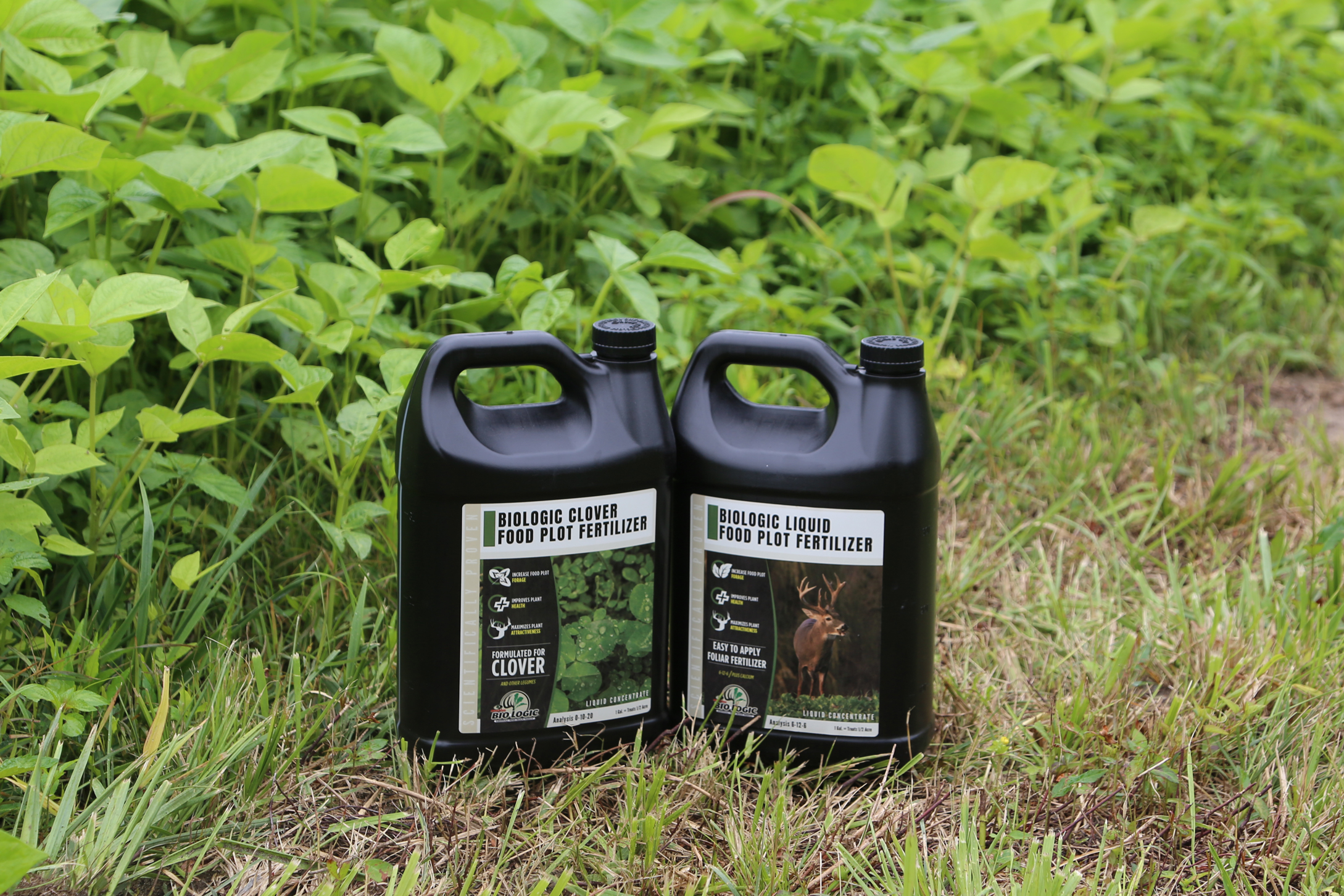
The advantage of liquid fertilizers is that they are quickly absorbed, so plants get their benefits very soon after you apply them. They are great as a starter solution, to supplement granular applications, and for a quick boost during the growing season, and if spaced out regularly they can even take the place of granular fertilizer (obviously depending upon your crops needs).
Foliar Application of Fertilizers
Foliar application with liquid fertilizer is an effective method for quickly solving nutrient problems appearing in many plants. In addition to foliar feeding allowing plants to absorb nutrients faster, it also avoids many common problems that cause nutrient loss in the soil. The BioLogic fertilizers mentioned above are ideal for foliar feeding, and can be quickly applied to bolster plant growth at critical times.
Since it is applied directly to the plant’s leaves and absorbed through the plant’s stoma, foliar applied liquid fertilizer moves quickly through the plant. Foliar feeding is effective for both micronutrients and macronutrients. The best foliar feeding method depends on your plant type, the plant’s growth stage, and any nutrient deficiencies the soil may have.
The Main Differences between Liquid Fertilizers and Granular Fertilizers
- Granular fertilizers are made from compact pellets that allow the nutrients to be released slowly into the soil where plants access the nutrients with their roots. Liquid fertilizers are better for quicker results as they absorb directly into the plants, however, the nutrients can also be taken up through the roots if the spray misses the plants and hits the soil.
- Granular fertilizer comes with pre-mixed nutrients for a single type of plant or soil. In contrast, liquid fertilizer is usually watered directly onto plants or into the soil
- Liquid fertilizers are easily absorbed and provide quick results, while granular fertilizers release nutrients more slowly, however, they last longer.
How Much Liquid Fertilizer to Use
We’ve gone through how to calculate granular fertilizer options, but calculating liquid fertilizer rates can be a bit confusing, yet still a necessary task when using any fertilizer.
The first step regardless of the liquid fertilizer you choose, will be to convert a gallon of liquid into pounds. Many bottles of liquid fertilizer will have this information on the bottle or on their website.
For properly calculating liquid fertilizer rates you will need to go through a series of math problems to get the information needed to determine how much of the product to apply per 1,000 sq. ft., or per acre. Many manufacturers only refer to 1,000 square feet. Remember that the product per 1,000 square feet is based on the correct amount of product, but then combined with water to form a solution to cover the square footage. You will need to convert that to cover an acre, or however big an area your plot covers. There are 43,560 square feet in an acre. Most liquid fertilizer manufacturers will give you their equations for resolving the proper amount to apply.
We will use a given amount of nitrogen to calculate how much liquid fertilizer you need to apply to deliver the correct amount in pounds of N to a food plot. You would need to do this with each of the nutrients (N, P & K) in the analysis.
What to Know Before Calculating Fertilizer on Your Food Plot
- The percentage of Nitrogen in the fertilizer (A)
- The weight per gallon of the fertilizer (B)
- How many pounds of Nitrogen you want to apply per acre (C)
- The total number of acres in the food plot (D)
Calculations:
- Pounds of Nitrogen per gallon of fertilizer (E) = A x B
- Gallons of fertilizer required to deliver desired amount of Nitrogen to one acre (F) = C / E
- Number of gallons required to deliver desired amount of Nitrogen to the plot (G) = F x D
BioLogic has already done the math for you. Since we’re spraying this formula on the plants themselves, we take many soil problems out of the equation. The plants should gain full use of the nutrients, so in this case a low pH shouldn’t affect the nutrients the plants are receiving. That is, unless the nutrients in the spray solution hit the soil. Anything taken up through the roots, then the pH will make a difference in what the plant is able to take up. For BioLogic’s foliar applied fertilizers, it clearly states how much product to apply per acre, making it easy for gamekeepers to use.


















